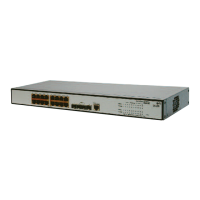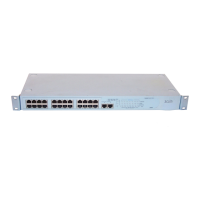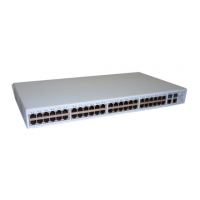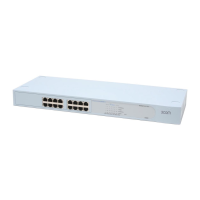1-20
Item Description
Instance
ID
Port
Priority
Auto Path
Cost
Instance
Manual
Path Cost
Set the priority and path cost of the port in the current MSTI.
z The priority of a port is an important factor in determining whether the
port can be elected as the root port of a device. If all other conditions
are the same, the port with the highest priority will be elected as the root
port. On an MSTP-enabled device, a port can have different priorities in
different MSTIs, and the same port can play different roles in different
MSTIs, so that data of different VLANs can be propagated along
different physical paths, thus implementing per-VLAN load balancing.
You can set port priority values based on the actual networking
requirements.
z Path cost is a parameter related to the rate of a port. On an
MSTP-enabled device, a port can have different path costs in different
MSTIs. Setting appropriate path costs allows VLAN traffic flows to be
forwarded along different physical links, thus achieving VLAN-based
load balancing. The device can automatically calculate the default path
cost; alternatively, you can also manually configure path cost for ports.
Point to
Point
Specify whether the port is connected to a point-to-point link.
z Auto: Automatically detects whether the link type of the port is
point-to-point.
z Force False: Specifies that the link type for the port is not point-to-point
link.
z Force True: Specifies that the link type for the port is point-to-point link.
If a port is configured as connecting to a point-to-point link, the setting
takes effect for the port in all MSTIs. If the physical link to which the port
connects is not a point-to-point link and you force it to be a point-to-point
link by configuration, the configuration may incur a temporary loop.
Transmit
Limit
Configure the maximum number of MSTP packets that can be sent during
each Hello interval.
The larger the transmit limit is, the more network resources will be
occupied. Therefore, you are recommended to use the default value.
Advanced
MSTP
Mode
Set whether the port migrates to the MSTP mode.
In a switched network, if a port on an MSTP (or RSTP) device connects to
a device running STP, this port will automatically migrate to the
STP-compatible mode. After the device running STP is removed, the port
on the MSTP (or RSTP) device may not be able to migrate automatically to
the MSTP (or RSTP) mode, but will remain working in the STP-compatible
mode. You can set this option to enable the port to automatically migrate to
the MSTP (or RSTP) mode.
Select port(s)
Select one or multiple ports on which you want to configure MSTP on the
chassis front panel. If aggregate interfaces are configured on the device,
the page displays a list of aggregate interfaces below the chassis front
panel. You can select aggregate interfaces from this list.
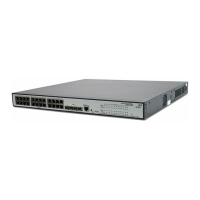
